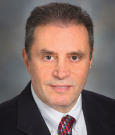At the 2014 American Society of Hematology Annual Meeting, a symposium on the high cost of cancer drugs proved provocative and a bit testy as panelists presented their various points of view.
‘Medical Darwinian System’
Already known for his outspoken views on the topic is Hagop M. Kantarjian, MD, Professor and Chair of Leukemia at the University of Texas MD Anderson Cancer Center, Houston. Dr. Kantarjian did not mince words, laying the blame squarely on the drug manufacturers.
“Are cancer drug prices too high? Definitely yes. Are they harming our patients? Yes, they are,” he said.
He noted that the cost of cancer drugs has skyrocketed from about $10,000 for a year’s treatment prior to 2000 to $100,000 a year, a 10-fold increase, despite an 8% reduction in the average household income.
Out-of-pocket expenses are compromising the economic and emotional security of cancer patients, who are often forced to choose between treatment and the family’s financial health, he said. The end result, Dr. Kantarjian suggested, is a “medical Darwinian system,” in which “if you can pay, you live, and if you cannot, you may die of your disease.”
‘Price Does Not Accurately Reflect Benefit’
Dr. Kantarjian said he does not buy the arguments given in support of high costs: Price reflects the expense of cancer research and the cost/benefit ratio of the drugs, market forces will set prices at reasonable levels, and price control will stifle innovation. “None of these is true, morally justifiable, or defensible,” he maintained.
He went further in his debunking of the oft-quoted figure for drug development—$1 billion—calling this “a myth propagated by pharmaceutical companies.” Actually, the most recent figure is $2.6 billion, published in November 2014 by the Tufts Center for the Study of Drug Development, which, according to Dr. Kantarjian, is funded by the pharmaceutical industry. [Tufts website states that it receives “unrestricted grants from pharmaceutical and biotechnology firms as well as companies that provide related services to the research-based industry (eg, contract research, consulting, and technology firms).”]
According to Dr. Kantarjian, this figure is inflated through the inclusions and exclusion of numerous components of the entire drug-development process. “A most objective estimate is that the cost of developing a cancer drug is 10% of the estimate,” he said.
He further maintained that price does not accurately reflect benefit, as new drugs are all priced at more than $100,000 a year, regardless of the length of survival prolongation. And, he contended that market forces do not correct imbalances, since there is a “collective monopoly” of companies with a “tacit agreement” not to compete on the basis of cost.
Additionally, Medicare legislation allows companies to be “the only decider on drug prices,” he said, and strategies are in place to prolong patent life. Innovation will continue, he predicted, “whether profits are reasonable or exorbitant,” since 85% of basic research is funded through taxpayer money.
“There is no escape in the discussion of drug prices. We need a situation where cancer drugs are affordable and patients can take them without the anxiety associated with lack of affordability,” he emphasized.
He asked physicians to be true to the Hippocratic Oath: “Protect patients against harm and injustice on the personal and social level.” High drug prices, when they are unaffordable, become harmful to the patient, he said.
Dr. Kantarjian also stated that, while most experts emphasize the difficulties in finding solutions, he believes there are several practical and simple solutions that will improve market forces: (1) allow Medicare to negotiate drug prices, (2) allow importation of drugs for personal use, (3) develop, through professional societies (ASCO, ASH, ACS), pathways and guidelines that propose treatment or drug “value”, (4) allow organizations like PCORI to incorporate drug prices in their analyses of treatment benefit, (5) prevent strategies that delay availability of generics. He finally suggested that since patients are their only real own advocates, the only solution might be patient-based grass root movements that highlight and protest high cancer drug prices.
Next up was Alex W. Bastian, MBA, Vice-President for GfK Market Access, San Francisco, which provides strategic & commercial consulting services to pharmaceutical, biotechnology, medical device, and diagnostics industries. He asked the audience to “open its mind” to a few concepts that are “real world, practical and actual considerations that take place—some related to structural characteristics and practices within our marketplace.”
Discussions about the cost of drugs have been a “constant theme” over the past century, and the problem is not unique to America, according to Mr. Bastian, who suggested the focus be on “value” rather than cost. In hematology, value has clearly been proven by the doubling and even tripling in survival among various malignancies treated with the latest agents, he indicated.
Nevertheless, the treatment armamentarium is much weaker for hematologic cancers than for solid tumors, which highlights the difficulties in developing drugs in this setting. Since 1998, there have been 249 “failed” drugs in the hematology pipeline. “I don’t know at what price, but it’s a lot, even at the price tag mentioned by Dr Kantarjian,” he said. “The number of approvals is much less in comparison to other cancers.”
“This gets to the idea of unintended consequences,” he continued. The point is not that current treatments must be priced high to justify past investments, but that high prices and healthy margins justify the continued investment in future therapeutics, he indicated.
The investment community is looking for a good return on its money, and profits are simply part of American-style capitalism, he said. This gets trickier as tumors become more molecularly classified. Potential markets for drugs become smaller as ever more targeted treatments are required.
“For a population with very low prevalence rates and high mortality, to justify investment by tumor types and subtumor types, we are talking fractions and subfractions,” he said. “Developing drugs is difficult for these populations.”
“If you are the investor, this is the real world—how to justify your investments. There are grave unintended consequences of advocating for hypertension-like drug prices for hematologic malignancies,” he said.
“There’s an implicit agreement that financial rewards will be provided to the manufacturer” largely through patent protections, he said. But he predicted a major shift in the next few years. “The days when Gleevec will cost cents on the dollar are close,” he indicated.
Meanwhile, he acknowledged, “We are front-loading cost, and the question is whether that’s right. I can’t answer that. A healthy discussion is important,” he said, and this discussion should examine total benefits as well as costs. This debate needs to include “a rounded view.”
Financial Toxicity
S. Yousuf Zafar, MD, Associate Professor of Medicine at Duke University, Durham, North Carolina, talked about the need for physicians to integrate costs into clinical decision-making and to include patients in these discussions. “It’s important to recognize that some patients are at risk for financial toxicity,” he said.
The average cancer patient spends about $5,000 out of pocket, and since 1999, the cost of insurance premiums has risen by 182%, and worker contributions to employee plans have gone up nearly 200%, he indicated.
In prospective, studies of patients, Dr. Zafar and colleagues have found that 52% of patients want to discuss treatment-related out-of-pocket costs with their oncologists and 51% want their oncologist to take costs into account when making treatment decisions, but only 19% have actually discussed these things with their doctors. For those who did discuss costs, 57% reported having lower out-of-pocket costs as a result.
“Our study highlights that patient-physician cost communication can reduce out-of-pocket costs, even in oncology, where treatment options are often limited,” he said. “We have to involve patients. I do this in the clinic every day.”
Drug Reimbursement Decisions in Canada
Canada might be able to teach the United States a thing or two about drug reimbursement, according to a talk by Andreas Laupacis, MD, a palliative care specialist at St. Michael’s Hospital in Toronto.
Drug reimbursement in Canada is more restrictive, and decisions are largely based on cost-effectiveness, “an ethical though admittedly imperfect tool with which to make tough policy decisions,” Dr. Laupacis said.
“In Canada, drug reimbursement committees decide whether to pay for a drug out of the public purse, not to pay because the drug is not cost-effective, or to pay for a restricted indication, such as a certain stage of cancer,” he said.
He conceded that cost-effectiveness calculations are “often messy,” as they usually lack validated surrogate markers of long-term clinical outcomes; nevertheless, they are important factors in decision-making in Canada.
Prior to the past few years, decisions in Canada were made based on the price submitted for consideration by the manufacturer, with no avenue for negotiation between the companies and payers. “This meant we often suggested that drugs not be funded, because at the price they charged, the drugs were not cost-effective,” he said.
“That changed recently, and if a drug is not felt to be cost-effective at the price submitted by the manufacturer, we have the ability to negotiate in an attempt to find a price at which it becomes cost-effective,” he indicated.
Regardless of determining cost-effectiveness and negotiating with drug companies, prices are still “massively higher” than they used to be and “generally not massively better” than current best treatments, he maintained.
“For the way forward, there are no easy solutions,” Dr. Laupacis concluded. His suggestions were to focus on obtaining high-quality information about effectiveness of drugs to accurately drive cost-effectiveness ratios, to negotiate prices aggressively based on cost-effectiveness, to use tools such as value-based discounts, and to involve patients in the dialogue.
Following the talks by panelists, a question-and-answer session featured several physicians who also were cancer patients lauding current therapies, albeit expensive, for keeping them alive. ■
Disclosure: Dr. Kantarjian has received research funding from Novartis, BMS, Ariad, Amgen, Pfizer, Sanofi, and Astex. Mr. Bastian has worked with or provided professional consulting services to multiple pharmaceutical companies for which his company received payment. Dr. Zafar is a nonpaid consultant for Genentech. Dr. Laupacis is a data monitoring committee member of Novartis.





